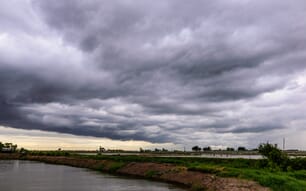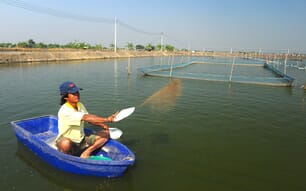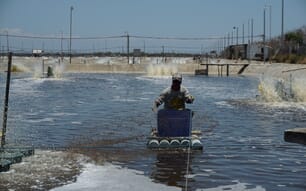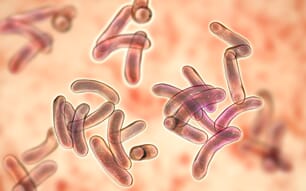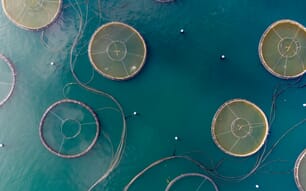We recently presented 10 top tips for shrimp farming, covering a number of areas. In this instalment, we would like to focus on one aspect in particular – water quality.
Maintaining good water quality is vital for various reasons. Good water quality creates favourable conditions for shrimp growth. Reducing the amounts of ammonia and organic particles reduces diseases risks. It should also reduce environmental pollution from waste water from shrimp farms.
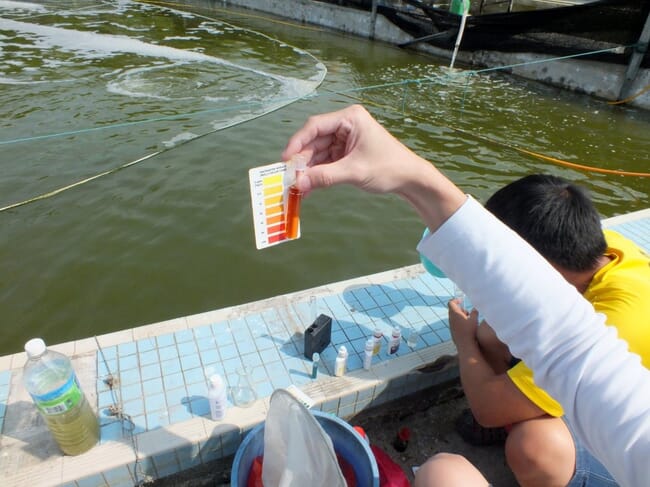
© Khoo Eng Wah
Here are six tips for maintaining good water quality in shrimp farming.
1. Maintain water-quality parameters within the ideal ranges
There are various parameters which indicate the level of water quality. Making sure that your water is within the ideal range for each of these parameters is a key step in maintaining good water quality.
These parameters include:
Temperature, dissolved oxygen (DO), salinity, alkalinity, pH, settleable solids, “N” chemicals (total ammonia nitrogen, unionised ammonia, nitrite, nitrate), phytoplankton, vibrio and hardness.
See the table below for the ideal range for each parameter. This should act as a guide and not be taken as absolute. Ideal ranges for each parameter may vary, depending on farm location, weather and infrastructure.
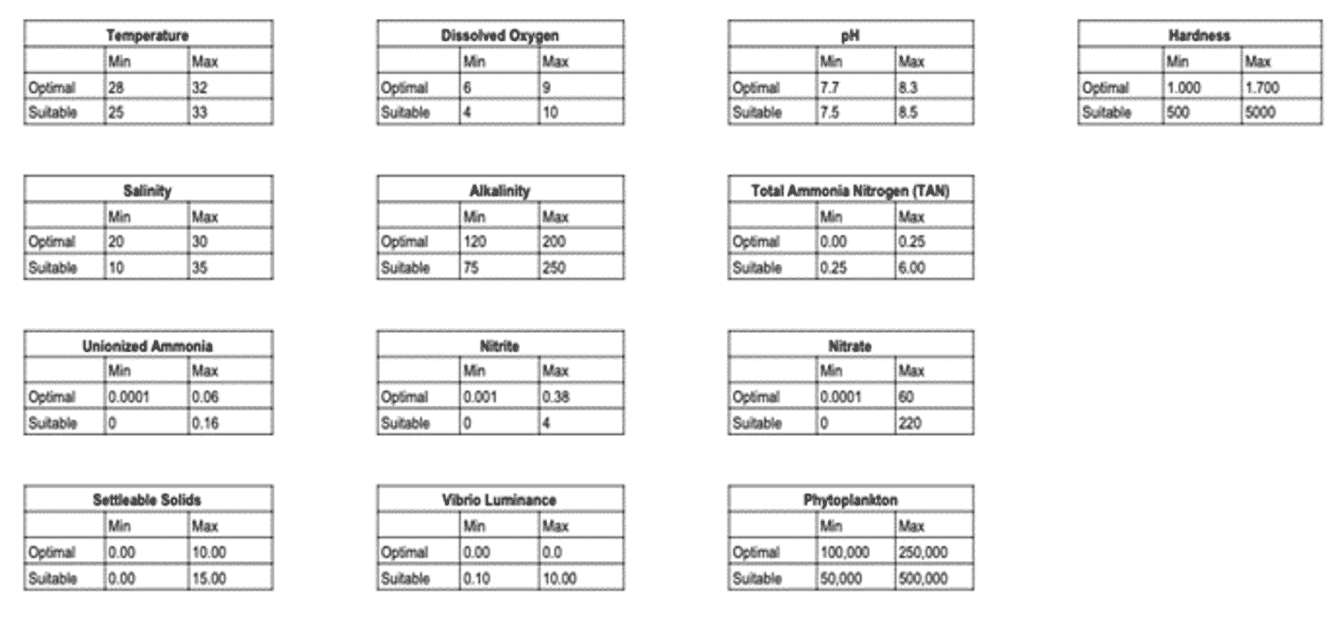
© Alune
2. Measure water-quality parameters routinely
In order to maintain water quality at the ideal level for each of these parameters, we obviously need to know the current measurements for each category. Regular measurement becomes an essential part of the overall effort to maintain water quality at a high standard. By measuring water quality against these parameters regularly, we can see if any aspects of the shrimps’ water are moving in an undesirable trajectory, making it possible for us to act long before problems appear.
Related to this, we also recommend calibrating your measuring tools at the beginning of each production cycle, in order to prevent errors which may result in loss of profit.
See the table below for the recommended period for measurement.

© Alune
3. Pay close attention to ionic ratio
Ionic composition has a great impact on shrimp health and shrimp growth. It is a key element in moulting and new shell formation. Ionic composition here refers to the ratio of Na (sodium) to K (potassium) and Mg (magnesium) to Ca (calcium). In order to maintain growth and reduce the risks of failed moult, we should maintain the Na:K and Mg:Ca ratios at balanced levels. Our recommended number is 28:1 for Na:K and 3.4:1 for Mg:Ca. However, the ideal ratios for your pond may be different.
It is important to emphasise, once again, that regular measurement is necessary to keep the ionic ratio in balance. You might see that, throughout the cycle, this ratio will be altered, for various reasons. In the event of ionic ratio imbalance, you may correct it by applying commercially available products, such as potassium chloride, magnesium chloride and mineral mixtures. However, be cautious as these products rarely disclose their composition of minerals.
4. Be aware of phosphorus and algae dynamics
Algae are an important part of the aquatic food chain. However, not all algae are good – some are not eaten by other organisms and produce toxins. Harmful algae have a better chance of accessing nutrients and light, thanks to their ability to control buoyancy,
making them grow faster and dominate other algae species. These harmful algae include blue-green algae, which are a type of bacteria and have the ability to photosynthesise.
Shrimp ponds receive large volumes of nutrients from feed. Most nutrients, particularly nitrogen and phosphorus, are not consumed by the shrimp and end up in the sediment and water column. Between 72 and 89 percent of phosphorus inputs are wasted and cause algal production to increase, potentially resulting in harmful algal blooms.
After a period, usually just a few days after an algal bloom, algae will reach their maximum growth phase and die. This event is called an algae crash and the dead algae cause the organic load to increase and can drive the ammonia concentration to toxic levels. They also utilise high amounts of oxygen, which could lead to oxygen depletion – a recipe for disease and mortalities.
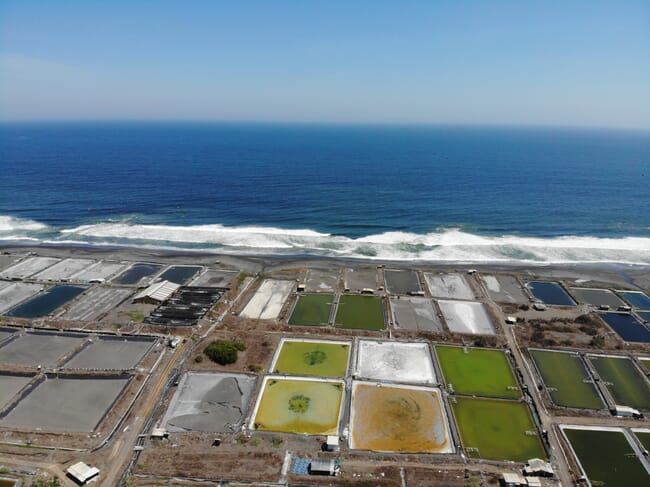
© Alune
Therefore, it is important to always monitor phosphorus and algae, to make sure that they are at a stable level. When you encounter high levels of phosphorus, followed by an increased algal population, we recommend increasing the water-exchange rate in order to prevent the aforementioned problems from happening.
5. Water exchange
Water exchange offers an economically efficient method to maintain good water quality. It can prevent excessive ammonia build-up and help the shrimp navigate stressful parts of the cycle, such as disease and harvest. We recommend avoiding water exchange before day of culture (DOC) 30 to 40, to maintain stable, good water quality.
The recommended amount of daily water exchange is 10 to 30 percent. The rate should increase throughout the cycle as the amount of feed input increases. When ammonia concentrations spike, it is better to increase the water-exchange rate, in order to reduce the ammonia concentration to a safe level.
One important thing to note is that, while it is beneficial, water exchange increases the risk of pathogens entering the system. We always recommend using pre-treated water.
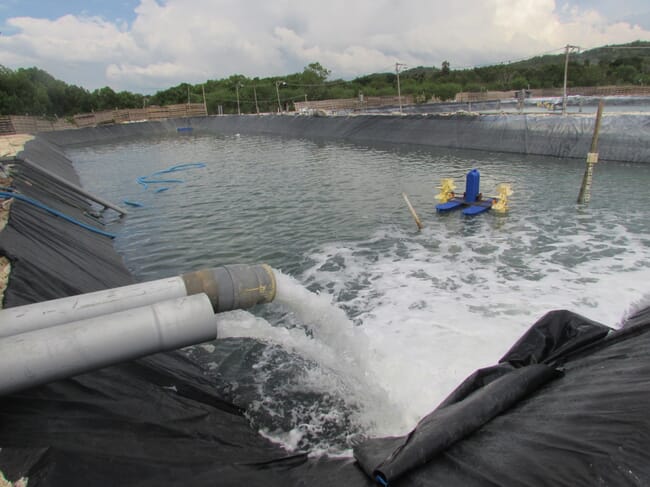
© Alune
6. Plan water troubleshooting
To complement the five tips above, we recommend using a troubleshooting plan to ensure that you’re prepared when problems caused by the change in water quality appear. This plan should describe actionable items for any possible problems. Regular monitoring, combined with a robust troubleshooting plan, provide the ability to address problems at an earlier stage.
There is an abundance of factors that can negatively influence water quality in many different ways. Every farm needs its own special treatment, but these six tips should cover the essentials of water-quality management. We hope this guidance can help shrimp farmers everywhere manage their ponds’ water quality.
Stay tuned for our next set of top tips soon.
The Alune* farming experts will be sharing their experiences and research in regular articles on The Fish Site as part of the Closer to shrimp aquaculture series.
*Alune is part of Hatch’s portfolio, but The Fish Site remains editorially independent.

